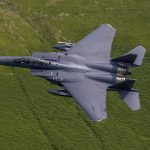In a tragic turn of events, the airspace above the nation’s capital has witnessed two devastating aircraft accidents, leaving communities in shock and raising crucial questions about air travel safety. The first incident took place near Reagan National Airport, where a passenger plane collided with a military helicopter. Unfortunately, there were no survivors in this horrific accident. Reagan National might be small, but it’s a bustling hub that welcomes over 20 million travelers each year, making it a vital artery of connectivity to Washington D.C.
On the same day, another calamity struck in Pennsylvania when a medical transport plane carrying a sick child, her mother, and four other individuals crashed shortly after takeoff. This incident proved to be equally tragic, with seven fatalities reported—six individuals on board and one person on the ground affected. As the nation grapples with these heart-wrenching losses, the question arises: what on earth could cause such disastrous crashes?
In the wake of these tragedies, many experts are beginning their investigations, searching for clues as to what went wrong. The complexities of air travel mean that many factors can contribute to an incident. Was there an issue with the aircraft’s mechanical performance? Were the pilots adequately trained and alert? These are just a few elements that investigators will scrutinize as they piece together the events leading to the crashes.
A former NASA crash investigator underscored the notion that understanding the circumstances is essential. With both crashes involving different types of aircraft, the investigation will need to address unique concerns. Think about the vital role that equipment plays in aviation. Data recorders and voice recorders hold essential information about flight performance and pilot communications, potentially offering insight into what led to the catastrophe. The results of such investigations could serve to enhance future air travel safety protocols.
As air travel has seen an uptick in activity since the pandemic, it is vital to maintain a state of vigilance regarding air security. The incidents have called attention to the ever-present threats in this realm, reminding everyone that continuous improvement is necessary in maintaining air travel safety. The past events may induce worries among travelers, but seasoned professionals in the field are committed to investigating these crashes and implementing measures to prevent their recurrence.
The Washington D.C. airspace, marked by its unique congestion from government and military aircraft, poses additional challenges to ensuring safety. With the continuous flow of flights from various agencies, including the Coast Guard and even police helicopters, balancing this busy airspace while safeguarding its residents is no small feat. This situation only amplifies the need for exacting standards when it comes to training and operational protocols in aviation.
As the investigations move forward, the nation awaits answers to these critical questions. While incidents like these shake public confidence in air travel, experts remain committed to restoring faith through diligent inquiries and enhanced safety measures. The memory of those lost will not be forgotten, and the hope is that future passengers can travel with peace of mind as the industry learns and grows stronger from such unfortunate events. Air travel may always carry some inherent risk, but with proactive measures and thorough investigations, the future can be brighter and safer for all involved.




